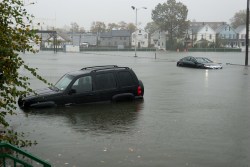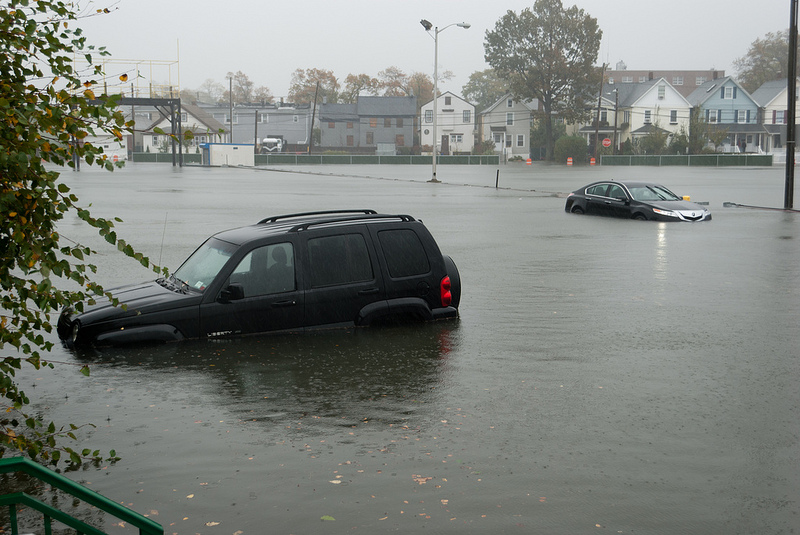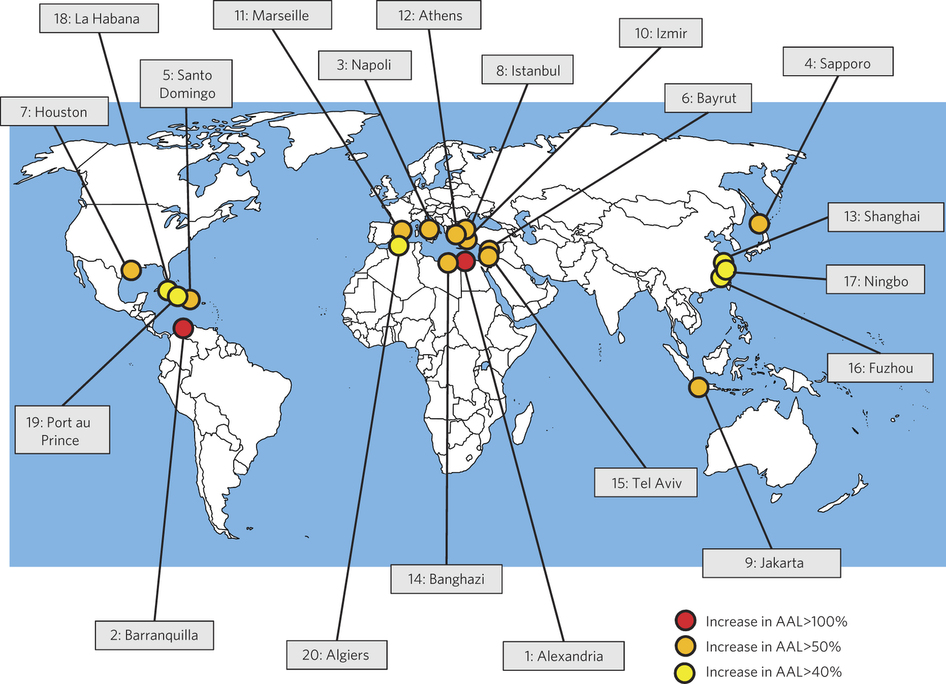
Oliver RichHurricane Sandy was a wake-up call for New York City, one of the 20 cities expected to see the most damages from flooding.
In 2005, flooding caused $6 billion worth of damage globally. By 2050, we could be hit with 10 times that much in losses — and that’s only if the world’s biggest coastal cities make significant investments to mitigate risk. If we do nothing, costs could soar to $1 trillion.
These sobering statistics come from a new study in Nature Climate Change which identifies the 20 coastal metropolises that stand to lose the most when (not if) major flooding occurs in the future. Sea-level rise, subsidence (the land sinking), and increasingly strong storms — all related to climate change — increase the risk of flooding. But much of the growing price tag of future flood losses is thanks to the growing numbers of people crowding along the world’s coasts.
[T]he most immediate threat is the sheer increase in people—and their property—put in harm’s way in coastal cities. In the U.S. 87 million people now live along the coast, up from 47 million people in 1960, and globally six of the world’s 10 largest cities are on the coast. Of the $60 to $63 billion in flood risk the Nature Climate Change study estimates the world’s cities will face by 2050, $52 billion is due to economic and population growth—the rest is due to sea level rise and land use change.
The study looks not only at which cities will face the highest absolute costs as a result of increased flooding, but also at which will see the largest relative increase in average annual damages, and which had the highest losses as a percentage of GDP in 2005. In terms of absolute losses, Miami and New York — places with large populations and high concentrations of wealth — face the most risk among cities in developed nations. In fact, in 2005, New York, Miami, and New Orleans accounted for 31 percent of total damage costs across all 136 cities studied (perhaps Katrina had something to do with that).
This chart of relative increases in average annual losses (AAL) includes some places that may not be accustomed to thinking of themselves as particularly flood-prone, but are going to have to adapt fast: Houston and Tel Aviv, for instance, are facing at least a 50 percent increase in AAL, while Alexandria, Egypt, and Barranquilla, Colombia, could see 100 percent increases or more.
When it comes to cities whose 2005 losses made up the highest percentage of their GDP, New York and Miami don’t appear in the top 10, but New Orleans is No. 2, joined by places like Guayaquil, Ecuador, and Abidjan, Cote d’Ivoire. While making aggressive adaptation moves — improving infrastructure, developing evacuation plans, establishing (literal) rainy day funds to prepare for economic rebuilding — will substantially lower future flooding losses, such measures won’t come cheap: The report estimates they’ll cost cities around $50 billion a year from now until 2050.
The extreme solution would be to start relocating everyone inland, reducing potential loss of life and property in flood zones. But what are the chances of getting all those coastal elites to move into flyover country? We’ll just keep pouring money into our pleasure boats as they sink.




